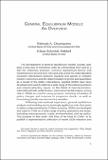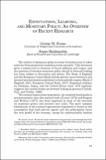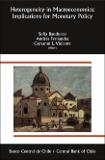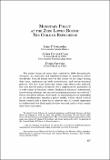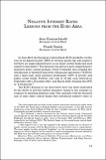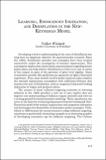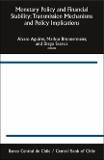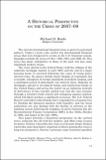Buscar
Mostrando ítems 41-50 de 568
General equilibrium models: an overview
The development of general equilibrium models (GEMs) goes back a long way in economics, both at a theoretical level and as a tool for empirical analysis. General equilibrium theory and modeling have proved to be relevant and useful for understanding economic interactions between markets and agents in ...
Expectations, learning and monetary policy: an overview of recent research
The conduct of monetary policy in terms of interest rate or other rules has been extensively studied in recent research. This literature gives a central role to forecasts of future inflation and output, and the question of whether monetary policy should be forward- ooking has been subject to discussion ...
Heterogeneity in macroeconomics: implications for monetary policy
There is important heterogeneity among households, firms, and banks; and the way shocks or policies affect these agents depends critically on that heterogeneity. There was a rapid surge in the awareness of academic researchers and policymakers...
Monetary policy at the zero lower bound: the Chilean experience
The global financial crisis that started in 2008 dramatically changed the analysis and implementation of monetary policy worldwide. Central banks were at the center of the stage during that time implementing both conventional and unconventional policies. Not only were monetary policy rates drastically ...
Negative interest rates: lessons from the Euro area
In June 2014 the European Central Bank (ECB) decided to cut the rate on its deposit facility (DFR) by 10 basis points (bp) into negative territory an unprecedented move as no major central bank had used negative rates before. This decision was part of a more comprehensive monetary policy easing package ...
Learning, endogenous indexation, and disinflation in the new-keynesian model
Developing a better understanding of the costs of disinflation has long been an important objective for macroeconomic research. Since the 1980s, disinflation episodes and strategies have been studied extensively under the assumption of rational expectations. This assumption implies that central bank ...
Monetary policy and financial stability: transmission mechanisms and policy implications
The global financial crisis that broke out 10 years ago uncovered the buildup of risks during a period of price and output stability. It challenged the previous consensus that preserving price stability was the optimal way to ensure financial stability, and led to a surge of interest in the multiple ...
A historical perspective on the crisis of 2007-08
The current international financial crisis is part of a perennial pattern. Today’s events echo earlier big international financial crises that were triggered by events in the U.S. financial system. Examples include the crises of 1857 1893 1907 and 1929–33. This crisis has many similarities to those ...
Determinacy, learnability, and plausibility in monetary policy analysis: additional results
It is almost superfluous to begin by emphasizing that recent research in monetary policy analysis has featured a great deal of work concerning conditions for determinacy—that is, existence of a unique dynamically stable rational expectations equilibrium— under various specifications of policy behavior.1 ...
Credit stabilization through public banks: the case of Banco Estado
A novel element in the policy mix that responded to the 2008- 2009 financial crisis was the explicit role given to BancoEstado a publicly-owned commercial bank to alleviate the contraction in domestic credit provided by the banking sector. In order to aid its mission BancoEstado was capitalized by 500 ...

